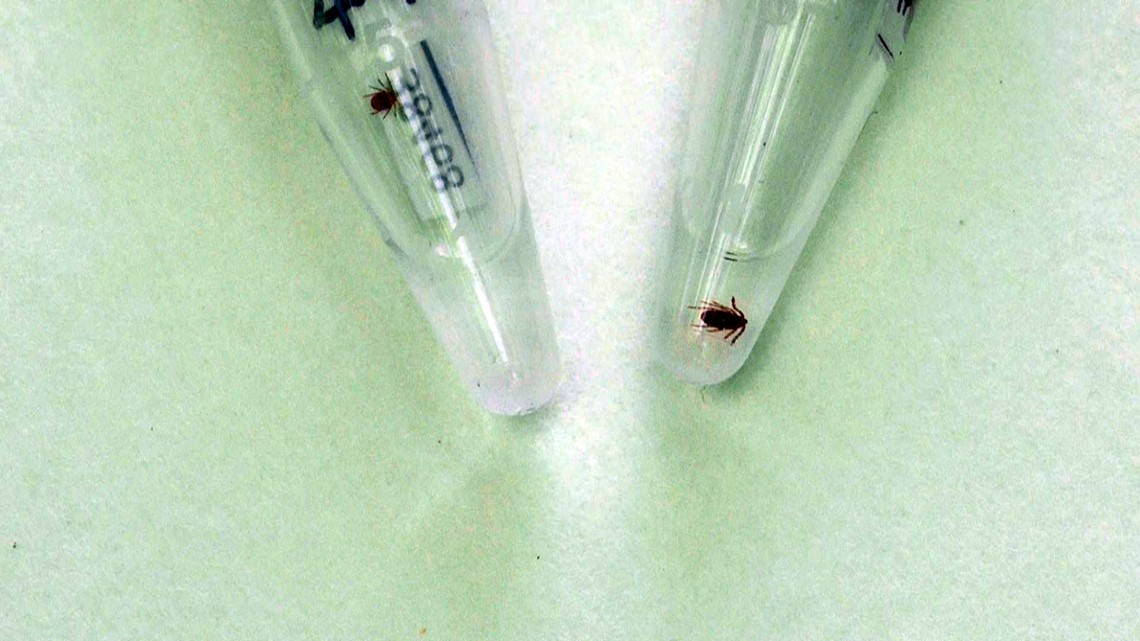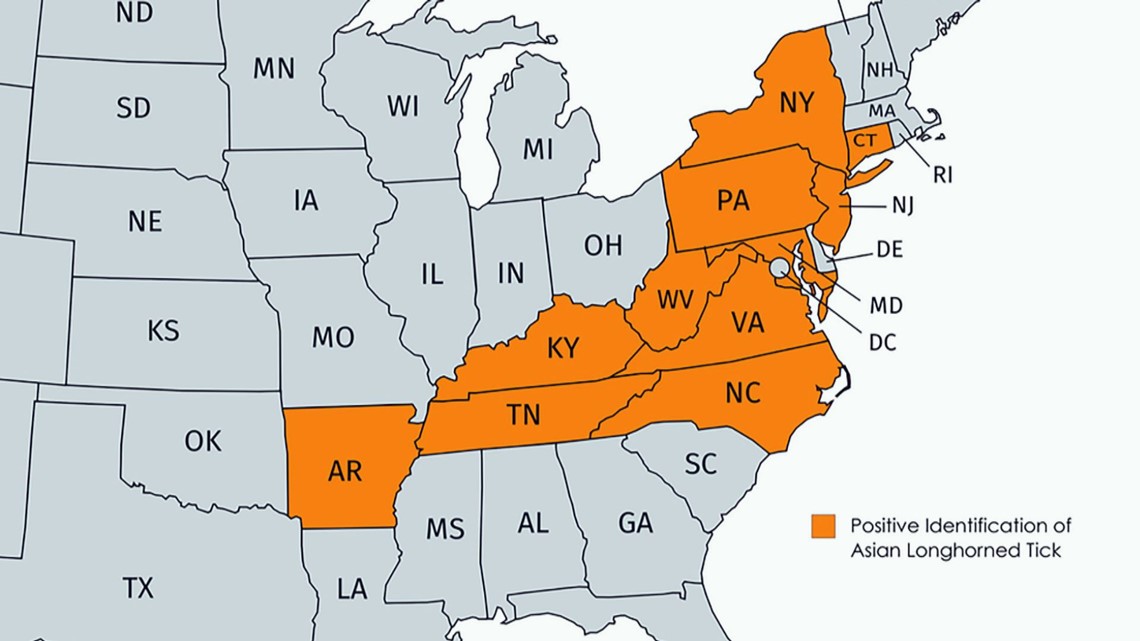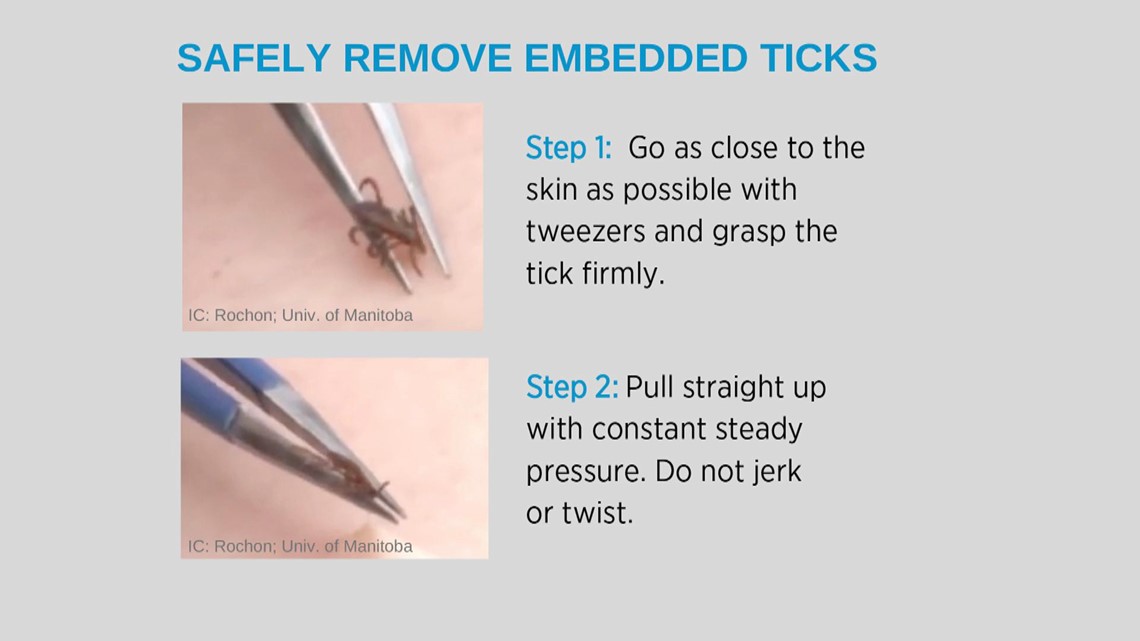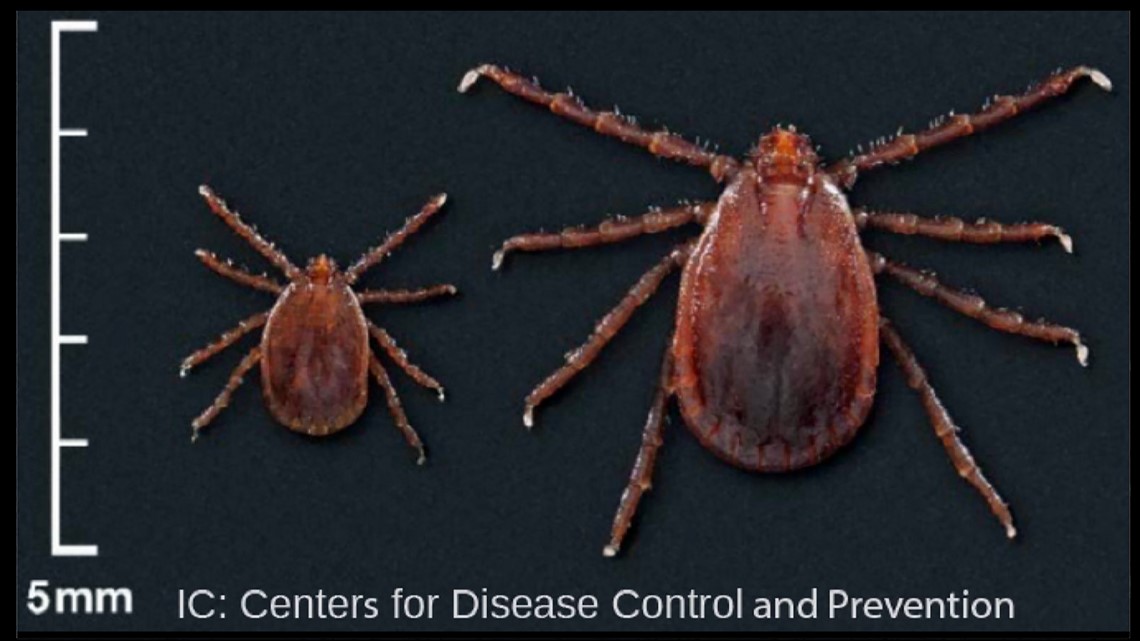KNOXVILLE, Tenn. — A tiny invasive tick from Asia continues to spread across Tennessee.
Scientists with the University of Tennessee have collected the Asian longhorned tick in Knox County. In May, the invasive pest was confirmed in Union and Roane Counties.
"So far, the tick was found on a dog and on cattle," said Graham Hickling, a wildlife scientists and UT associate professor for forestry, wildlife, and fisheries. "They're really small. Tiny little brown ticks with no distinct markings on their backs."
Hickling is part of a group of scientists, led by UT associate professor Becky Trout Fryxell, tracking the Asian longhorned tick. One of the ways they detect ticks is a real drag.


"This is about as high-tech as tick technology gets. It's just a big white drag cloth. You go to the edge of a wooded area and drag it across the vegetation and grass. You take a few paces with it and the movement tricks the ticks into thinking it is a wild animal they can hop on. And if there's ticks in the area, they'll have just latched onto the cloth," said Hickling.
None of the Asian longhorned ticks in Tennessee have been found using drag cloths. But Hickling said the cloths have picked up the invasive species in several counties just across the state line in southwest Virginia.
"We don't know exactly how the ticks are spreading, but we can guess they are spread on wildlife or livestock. They were first found in New Jersey and have been found in areas near interstates," said Hickling.
The Asian longhorned ticks are different due to their small size and the fact that females can lay eggs and reproduce without mating.


"One of our concerns is this tick can become super-abundant. It can multiply and get to very high infestation levels on an animal. USDA and the state ag agencies are very concerned because there is the potential this could become a major livestock pest. And then it could get on pets and it could occasionally get on people," said Hickling.
None of the Asian longhorned ticks in the United States have tested positive for diseases. The insect is known to carry illnesses in Asia.
Hickling says the species is not any more dangerous to people and pets than all the other species of ticks you should already be guarding against.


"There are a whole bunch of tick species out there and they carry several different pathogens. From a human point of view, just be watchful for any of these ticks," said Hickling.
Apply EPA-approved tick repellent to your skin and wear permethrin-treated clothing to avoid ticks. When spending time in wooded areas, tuck pants into your shoes to stop the insects from crawling inside pants legs.
"It's always a good idea after you've removed your clothing, take a look at your body in those hot spots maybe. Under the arms, the elbows, behind the knees, belt-lines, and hairlines," said Connie Cronley, lead investigative nurse for the Knox County Health Department.
If you find any kind of tick, grab it with tweezers as close to the skin as possible and pull it out. Never burn it off.


"The reason you don't burn it off is that can make the tick vomit. And then it back-washes all the bad stuff back into you. So, you don't want to upset the tick. Just grab it and pull it off," said Hickling.
If you find a tick and are concerned about illnesses, place the insect in a sealed plastic bag in the freezer. If you do not develop any symptoms after a few days, throw the bag away. If you become ill, take the bag with you to the doctor so it can be tested.
If you find an Asian longhorned tick on a pet or person, you can help track the spread of the species by notifying the researchers at the University of Tennessee when and where it was found.
Dr. Rebecca (Becky) Trout Fryxell
Associate Professor
431 Plant Biotechnology Building
2505 EJ Chapman Drive
Knoxville, TN 37996-4560
Office: 865-974-8824
Email: rfryxell@utk.edu



